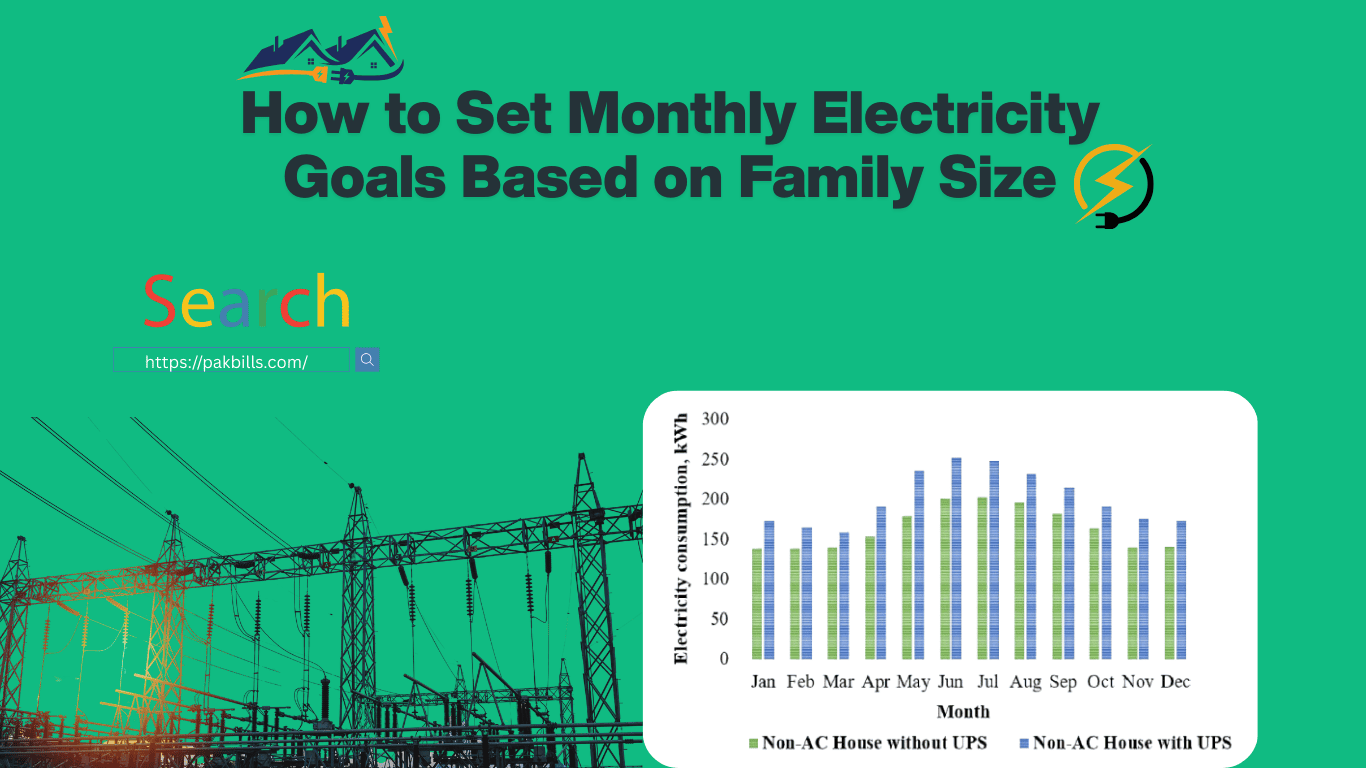Managing your electricity consumption isn’t just about saving money—it’s about being smart with your energy use and ensuring your home runs efficiently. For Pakistani households, where energy prices are rising and usage habits vary widely, setting monthly electricity goals based on family size is both practical and necessary. Understanding your family’s energy needs helps you track usage better, avoid billing shocks, and adopt a more sustainable lifestyle. Curious where to start? The good news is, it’s easier than you think to plan your electricity use effectively, especially when you understand your household patterns and apply simple tools. Understanding Your Electricity Bill is the first step toward better energy planning.
Understanding Electricity Consumption Patterns in Pakistan
Before setting goals, it’s essential to understand how electricity is typically consumed across Pakistani homes. The monthly electricity usage in Pakistan depends on many factors, including region, appliance usage, and, of course, family size. According to an MDPI study, a seven-member family in Pakistan uses approximately 2,469 kWh annually, which translates to around 205 kWh per month. That’s a useful benchmark, but real usage varies:
- Smaller families (1–3 members) may use 100–150 kWh/month
- Medium-sized families (4–5 members) range between 150–250 kWh/month
- Larger families (6+ members) often exceed 250 kWh/month, especially in summer
Your average electricity usage per household could spike due to factors like air conditioner use, electric geysers, or multiple TVs and refrigerators.
Seasonal changes, long summer months, and regional climate differences also play a major role in influencing monthly consumption.
Factors Influencing Household Electricity Consumption
Your electricity bill isn’t just about family size—it’s also about what appliances you use, how often you use them, and whether your home is optimized for efficiency.
Major Factors That Affect Consumption:
Appliance types & quantity: Air conditioners, geysers, and deep freezers are major contributors to energy consumption by appliances.
- Usage habits: Leaving lights or fans on unnecessarily can add up fast.
- Family routines: Homes with school-going children or work-from-home adults tend to consume more.
- Home insulation: Poor insulation leads to more AC or heater use, especially during extreme weather.
By understanding these behaviours, you can apply electricity saving tips for families that reduce waste and help stay within your monthly limits.
Want to go further? Check out our guide: Tips to Reduce Electricity Bills
Setting Monthly Electricity Consumption Goals Based on Family Size
This is the heart of your energy-saving journey. Setting consumption goals involves understanding your household’s baseline usage and adjusting it according to family size.
Step-by-Step Guide:
1. Assess your current usage
Look at your past 3–6 months’ bills and calculate your average monthly kWh.
2. Use a calculator tool
Try an electricity consumption calculator or the official NEECA electricity calculator to estimate appropriate usage.
3. Set a realistic goal
Match your household size to the recommended kWh limit and adjust based on appliance count and seasonal factors.
Recommended Monthly kWh Goals (Estimates):
|
Family Size |
Basic Appliances Only |
With ACs/Geysers |
|
1–2 members |
100–120 kWh |
150–180 kWh |
|
3–4 members |
150–200 kWh |
200–250 kWh |
|
5–6 members |
200–250 kWh |
300–350 kWh |
|
7+ members |
250–300 kWh |
350–450 kWh |
These estimates help set a baseline and prevent overconsumption—especially useful when you want accurate electricity bill estimation in Pakistan. Learn more about goal setting here: Electricity Bill Estimation Tools
Practical Tips to Achieve Your Electricity Consumption Goals
Once you’ve set your target, it’s time to take action. Here are some practical steps to stay on track and reduce your electricity bill:
Energy-Efficient Habits:
- Set AC thermostat at 26°C and use ceiling fans for circulation
- Wash clothes in cold water and only run full loads
- Unplug devices when not in use (especially chargers and TVs)
Appliance Upgrades:
- Replace incandescent bulbs with LEDs
- Use inverter ACs and refrigerators where possible
- Invest in energy-efficient washing machines and microwaves
Behavioral Shifts:
- Encourage children to turn off lights and devices
- Use timers and smart plugs to automate control
These small actions add up to major savings and contribute to energy efficiency in Pakistani homes.
Want more tips? Energy Efficiency Tips for Pakistani Homes
Conclusion
Setting monthly electricity consumption goals based on family size is a practical way to take control of your energy use, manage costs, and contribute to a more sustainable lifestyle. Start by understanding your patterns, using tools like the NEECA electricity calculator, and applying daily habits that make a real difference. Whether you're a couple living in a small apartment or a joint family in a larger home, the right approach can help you save both energy and money.
Need more help?
Explore our guides, tips, and calculators on Pakbills to check your bill online, estimate usage, and reduce costs easily.


Leave a Comment